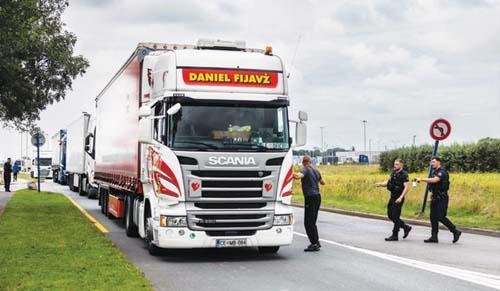
Channel migrants confront tighter French coast patrols
Celina Ali
Calais: A chain of buoys blocks a river in northern France, the latest costly measure the authorities have deployed in their almost impossible mission to stop Britain-bound migrants crossing the Channel.
Set up on August 10 near the La Canche estuary, the floating barrier is designed to halt so-called “taxi boats” used by people smugglers in recent months.
The small vessels start their perilous journeys empty, away from the beaches, before picking up migrants from Africa, the Middle East and Asia on the coast.
After 27 people drowned in November 2021 — the worst accident in the Channel since the narrow strait became a key irregular migration route — patrols have been stepped up. All along some 130 kilometres (81 miles) of coastline between the city of Dunkirk and the Somme Bay, the authorities scour the area day and night.
The silence of dawn is broken by the purring engine of a plane belonging to EU border agency Frontex, equipped with infrared and thermal cameras to rescue stricken migrants alongside drones. Advancing on foot or buggies, an average of 800 security force personnel survey the beaches and dunes every day.
Surveillance cameras have been installed in 12 communes and four ports, with the scheme set to be widened in 2024, according to the local authorities. The cat-and-mouse game between the police and migrants has moved to the coast after security was tightened in 2018 at the port of Calais and the Channel tunnel linking France with southeast England.
The area surrounding Calais now resembles a fortress: fencing and cameras encircle the port and tunnel terminal, while an “anti-intrusion” wall has been erected beside a road to prevent migrants clambering onto lorries. Fencing also protects parking spots in the Transmarck logistical zone.
“We manage to get in” sometimes, “but it’s difficult”, said Awham, a 23-year-old Sudanese man pushed out of the area by police. As well as battling crossing attempts, the authorities are waging a war on places where migrants may gather to avoid the reappearance of camps known as “jungles”.
